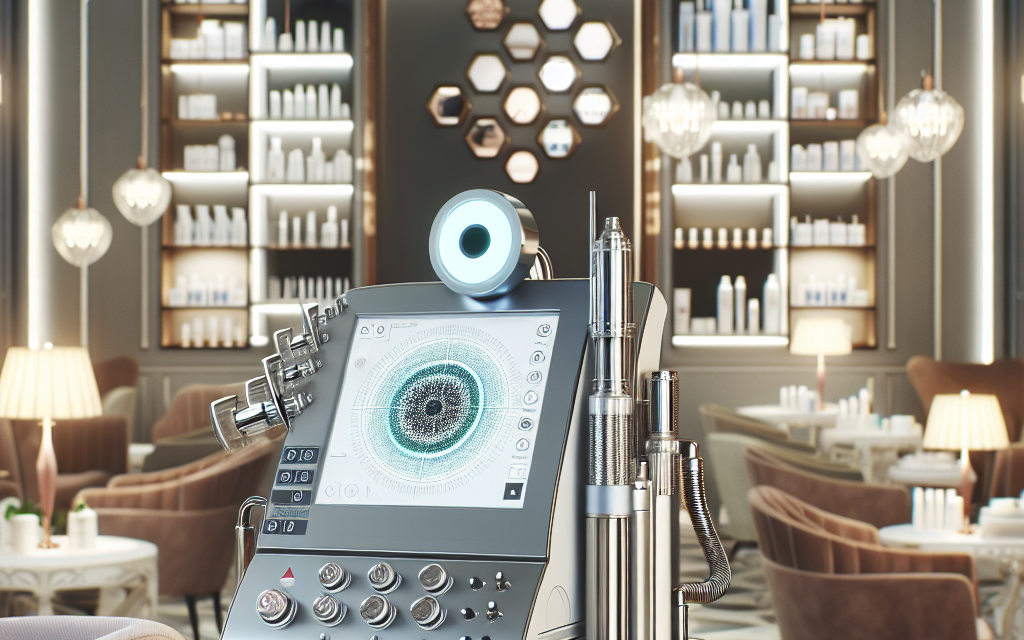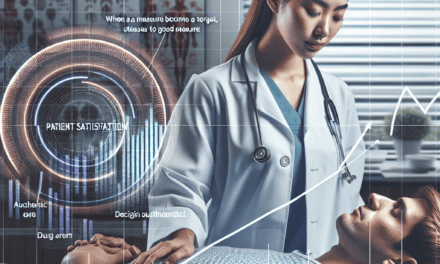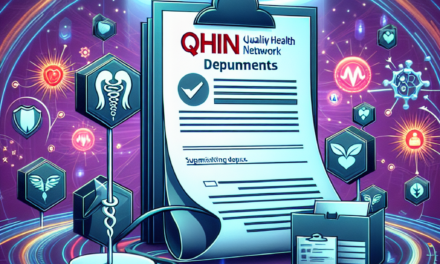Choosing the Best Skin Analysis Tool to Enhance Your Skincare and Aesthetic Offerings

In the ever-evolving world of skincare and aesthetics, professionals are constantly seeking innovative ways to enhance their offerings and provide clients with personalized, effective treatments. One of the most significant advancements in this field is the development of sophisticated skin analysis tools. These tools not only help in diagnosing skin conditions but also in tailoring treatments to meet individual needs. This article delves into the intricacies of choosing the best skin analysis tool, providing insights into various aspects that professionals should consider.
Understanding the Importance of Skin Analysis in Skincare
Before diving into the specifics of choosing a skin analysis tool, it’s crucial to understand why skin analysis is a cornerstone of effective skincare. Skin analysis provides a comprehensive understanding of a client’s skin type, condition, and needs, allowing for more targeted and effective treatments.
Skin analysis tools can detect a range of skin issues, from dehydration and pigmentation to acne and aging signs. By identifying these issues early, skincare professionals can recommend appropriate treatments and products, enhancing client satisfaction and loyalty.
Moreover, skin analysis tools can track changes in the skin over time, providing valuable data that can be used to adjust treatments and measure their effectiveness. This data-driven approach not only improves outcomes but also builds trust with clients, who can see tangible results from their skincare regimen.
In summary, skin analysis is a critical component of modern skincare, providing the foundation for personalized, effective treatments. By investing in a high-quality skin analysis tool, professionals can enhance their offerings and deliver superior results to their clients.
Key Features to Look for in a Skin Analysis Tool
When choosing a skin analysis tool, there are several key features that professionals should consider. These features can significantly impact the tool’s effectiveness and usability, making it essential to choose wisely.
1. Accuracy and Precision
The primary function of a skin analysis tool is to provide accurate and precise data about a client’s skin. This data forms the basis for treatment recommendations, making accuracy a critical factor. Look for tools that use advanced imaging technology and algorithms to ensure precise measurements and reliable results.
For example, some tools use multispectral imaging to capture detailed images of the skin, allowing for a comprehensive analysis of various skin layers. This technology can detect issues that are not visible to the naked eye, providing a more thorough understanding of the skin’s condition.
2. Comprehensive Analysis Capabilities
A good skin analysis tool should offer a comprehensive analysis of various skin parameters, including hydration levels, pigmentation, texture, and elasticity. This allows professionals to identify a wide range of skin issues and tailor treatments accordingly.
Some advanced tools also offer additional features, such as UV damage assessment and pore analysis, providing even more detailed insights into the skin’s condition. By offering a comprehensive analysis, these tools enable professionals to address multiple skin concerns simultaneously, enhancing treatment outcomes.
3. User-Friendly Interface
While advanced features are important, the tool’s usability is equally crucial. A user-friendly interface ensures that professionals can easily navigate the tool and interpret the results, making the analysis process more efficient and effective.
Look for tools with intuitive interfaces and clear, easy-to-understand reports. Some tools also offer training and support to help professionals get the most out of their investment, ensuring that they can use the tool effectively from day one.
4. Integration with Other Systems
In today’s digital age, integration with other systems is a valuable feature for any skin analysis tool. This allows professionals to seamlessly incorporate the tool into their existing workflow, enhancing efficiency and productivity.
For example, some tools can integrate with electronic health records (EHR) systems, allowing professionals to easily access and update client information. This integration can streamline the analysis process and improve communication with clients, enhancing the overall experience.
5. Portability and Durability
For professionals who offer mobile services or work in multiple locations, portability is an important consideration. Look for tools that are lightweight and easy to transport, without compromising on features or performance.
Durability is also crucial, as skin analysis tools are a significant investment. Choose tools that are built to last, with high-quality materials and robust construction. This ensures that the tool can withstand regular use and continue to deliver accurate results over time.
Comparing Popular Skin Analysis Tools on the Market
With a clear understanding of the key features to look for, it’s time to explore some of the most popular skin analysis tools available on the market. Each tool offers unique features and benefits, making it essential to compare them carefully to find the best fit for your needs.
1. VISIA Skin Analysis System
The VISIA Skin Analysis System is one of the most well-known tools in the industry, offering a comprehensive analysis of various skin parameters. It uses advanced imaging technology to capture detailed images of the skin, providing insights into texture, pigmentation, and UV damage.
One of the standout features of the VISIA system is its ability to compare a client’s skin to a database of individuals with similar demographics. This allows professionals to provide clients with a clear understanding of how their skin compares to others, enhancing the personalization of treatments.
2. OBSERV 520
The OBSERV 520 is another popular choice, known for its versatility and ease of use. It offers a range of analysis modes, including daylight, cross-polarization, and UV, allowing professionals to assess various aspects of the skin’s condition.
This tool is particularly useful for detecting pigmentation issues and assessing the effectiveness of treatments over time. Its compact design and user-friendly interface make it a great option for professionals who need a portable, easy-to-use solution.
3. Canfield Reveal Imager
The Canfield Reveal Imager is a powerful tool that offers a detailed analysis of skin texture, pigmentation, and vascular conditions. It uses high-resolution imaging to capture clear, detailed images, providing professionals with valuable insights into the skin’s condition.
One of the key benefits of the Reveal Imager is its ability to track changes in the skin over time, allowing professionals to measure the effectiveness of treatments and make data-driven adjustments as needed.
4. Aram Huvis H-Scope
The Aram Huvis H-Scope is a versatile tool that offers a range of analysis options, including hydration, elasticity, and sebum levels. It uses advanced imaging technology to provide a comprehensive analysis of the skin’s condition, making it a valuable tool for professionals looking to offer personalized treatments.
This tool is particularly useful for assessing the effectiveness of skincare products, allowing professionals to make informed recommendations based on the client’s unique needs.
5. Dermalogica Face Mapping
Dermalogica Face Mapping is a unique approach to skin analysis that combines traditional techniques with modern technology. It involves a detailed assessment of the skin’s condition, followed by personalized treatment recommendations based on the findings.
This approach is particularly effective for identifying underlying issues that may not be immediately apparent, allowing professionals to address the root cause of skin concerns and deliver more effective treatments.
Case Studies: Success Stories with Skin Analysis Tools
To illustrate the impact of skin analysis tools, let’s explore some real-world case studies that highlight their effectiveness in enhancing skincare and aesthetic offerings.
1. Case Study: Improving Client Satisfaction with VISIA
A leading skincare clinic in New York City implemented the VISIA Skin Analysis System to enhance their client consultations. By providing clients with detailed insights into their skin’s condition, the clinic was able to tailor treatments more effectively and improve client satisfaction.
The VISIA system’s ability to compare clients’ skin to a database of similar individuals also helped the clinic set realistic expectations and build trust with clients. As a result, the clinic saw a significant increase in client retention and referrals.
2. Case Study: Enhancing Treatment Outcomes with OBSERV 520
A mobile aesthetician in Los Angeles incorporated the OBSERV 520 into her services to offer more personalized treatments. The tool’s versatility and portability allowed her to provide comprehensive skin analysis on-the-go, enhancing the quality of her services.
By using the OBSERV 520 to assess clients’ skin conditions before and after treatments, the aesthetician was able to make data-driven adjustments and improve treatment outcomes. This led to increased client satisfaction and a growing client base.
3. Case Study: Boosting Product Sales with Canfield Reveal Imager
A skincare retailer in London used the Canfield Reveal Imager to enhance their product consultations. By providing clients with detailed insights into their skin’s condition, the retailer was able to recommend products more effectively and boost sales.
The Reveal Imager’s ability to track changes in the skin over time also helped the retailer demonstrate the effectiveness of their products, leading to increased client loyalty and repeat purchases.
4. Case Study: Addressing Complex Skin Issues with Aram Huvis H-Scope
A dermatologist in Sydney used the Aram Huvis H-Scope to address complex skin issues in her patients. The tool’s comprehensive analysis capabilities allowed her to identify underlying issues and tailor treatments more effectively.
By using the H-Scope to assess the effectiveness of treatments over time, the dermatologist was able to make data-driven adjustments and improve patient outcomes. This led to increased patient satisfaction and a growing reputation for excellence.
5. Case Study: Personalized Skincare with Dermalogica Face Mapping
A spa in Toronto implemented Dermalogica Face Mapping to enhance their skincare consultations. By combining traditional techniques with modern technology, the spa was able to provide clients with personalized treatment recommendations based on their unique needs.
This approach not only improved treatment outcomes but also enhanced the overall client experience, leading to increased client satisfaction and loyalty.
Conclusion: Making the Right Choice for Your Practice
Choosing the best skin analysis tool is a critical decision that can significantly impact the quality of your skincare and aesthetic offerings. By understanding the importance of skin analysis, identifying key features to look for, and comparing popular tools on the market, professionals can make an informed decision that meets their unique needs.
Whether you’re looking to improve client satisfaction, enhance treatment outcomes, or boost product sales, investing in a high-quality skin analysis tool can help you achieve your goals. By providing clients with personalized, effective treatments, you can build trust, loyalty, and a reputation for excellence in the competitive world of skincare and aesthetics.
Ultimately, the right skin analysis tool can be a valuable asset to your practice, helping you deliver superior results and enhance your offerings. By choosing wisely, you can set your practice apart and achieve long-term success in the ever-evolving world of skincare and aesthetics.





